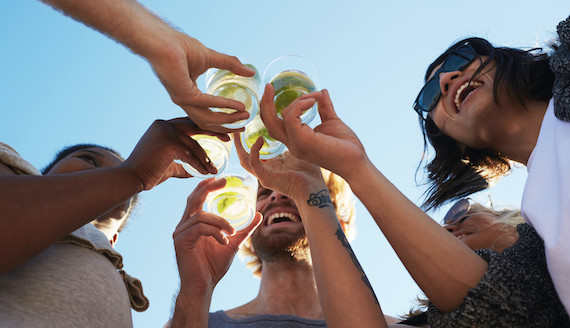“The perception of cachaça in the past was hangovers,” says Lowe. “I related it to tequila growing up and in 1999 we never would’ve believed that tequila would become a very well respected sipping spirit. Tequila has done it quicker than cachaça but we’re following a similar track.”
Abelha Gold is aged for three years in garapeira, a type of native Brazilian ash, and Stockley believes that the aged expressions could resonate globally.
“I feel at some point we’ll start to see a cachaça craze because there’s not only an incredible number of cachaças with regional characteristics and flavour proles, but also they use up to 25 different kinds of wood to age cachaça in. These are spirits not aged in American or French oak,” says Stockley. “There’s a lot to explore here. When we start seeing more aged cachaças, rested cachaças or even fine extra-aged cachaças, then I think there’ll be an increase in awareness and interest. At the moment, it’s perceived as just a white spirit really and in the last five to 10 years we’ve seen a movement away from white spirits like with golden and dark rums.”
To date, the international growth of the category hasn’t been without its hurdles. Until 2013, the spirit was labelled “Brazilian rum” in the US, a retaliation to Brazil refusing to label bourbon as an American product.
In response, cachaça brand Leblon, which was acquired by Bacardi in 2015, launched the Legalize Cachaça campaign. The movement successfully lobbied the United States Alcohol & Tobacco Tax & Trade Bureau into recognising the spirit as a distinct class in the US, but that’s not the case everywhere.
“Since the American ‘legalisation’ there has been a knock-on effect,” says Stockley. “It’s still not seen as its own category in many countries. Until we start seeing a differentiation between cachaça, rhum agricole, and rum, awareness won’t increase as much as it would do if separated.
“One of the key things I like to do is staff training, to go through the differences between cachaça, rhum agricole and white rum, give examples and go into the production methods, the definitions and the rules and regulations, not just for the staff but also at consumer tasting and promotion events. We’re raising awareness slowly but surely.”
As a category, cachaça seems to have all the tools to be a breakout hit and its huge dominance in Brazil is proof that it’s a crowd-pleaser.
There has been a criticism made by some producers that they’re not being pushed internationally in a meaningful way by the Brazilian government or a trade association, like Tequila’s Regulatory Council, and there may be merit in that.
As international drinkers become more discerning, the artisanal, aged, and small batch expressions of cachaça seem to be a secret waiting to be revealed. What the category’s exports must avoid is a race to the bottom.




